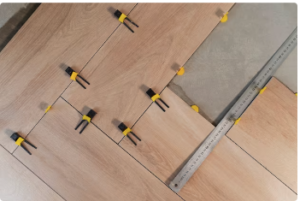Laminate flooring is a popular choice for homeowners due to its durability, affordability, and ease of installation. However, water damage can be a common issue, especially in areas prone to high moisture levels. If your laminate floors have been affected by water damage, don’t panic! With some elbow grease and some simple tools, you can restore them to their former glory.
Here’s a step-by-step guide to help you get started.
Step 1: Assess the Damage
The first step is to assess the extent of the damage. Determine if the water has caused any swelling or warping of the laminate boards. You may need to replace the affected boards if the damage is severe.
Step 2: Remove the Damaged Boards
If there are only a few damaged boards, you can remove them using a circular saw or a jigsaw. Be careful not to damage the surrounding boards in the process. If the damage is more widespread, it may be best to call a professional to remove and replace the affected boards.
Step 3: Dry the Subfloor
Before installing new laminate boards, you’ll need to ensure that the subfloor is completely dry. Use a dehumidifier or fan to help speed up the drying process.
Step 4: Install New Boards
Once the subfloor is dry, you can install new laminate boards. Be sure to choose a product that matches your existing flooring. Follow the manufacturer’s instructions for installation, use a tapping block, and pull the bar to ensure a snug fit.
Step 5: Seal the Edges
To prevent any future water damage, it’s important to seal the edges of the new boards. Apply a high-quality sealant around the room’s perimeter and any gaps between the boards.
Laminate flooring water damage is a common issue, but it can be repaired with the right tools and patience. Following these simple steps, you can restore your floors to their former beauty and protect them from future damage.
If not repaired, Laminate flooring water damage can lead to several problems. Here are some potential consequences:
- Mold and Mildew Growth: can cause health issues such as allergies and respiratory problems.
- Warping and Buckling: Laminate flooring can warp and buckle when exposed to water, resulting in an uneven and unsightly surface.
- Structural Damage: If left unchecked, water damage can weaken the subfloor and compromise the structural integrity of your home.
- Odor: can emit a musty and unpleasant odor that can linger for weeks or even months.
- Reduced Home Value: this can detract from your home’s overall appearance and value, making it more difficult to sell in the future.
In summary, not repairing water-damaged laminate flooring can lead to many problems that can impact your health, home, and wallet. It’s best to address the issue as soon as possible to prevent further damage and ensure a safe and comfortable living space.



